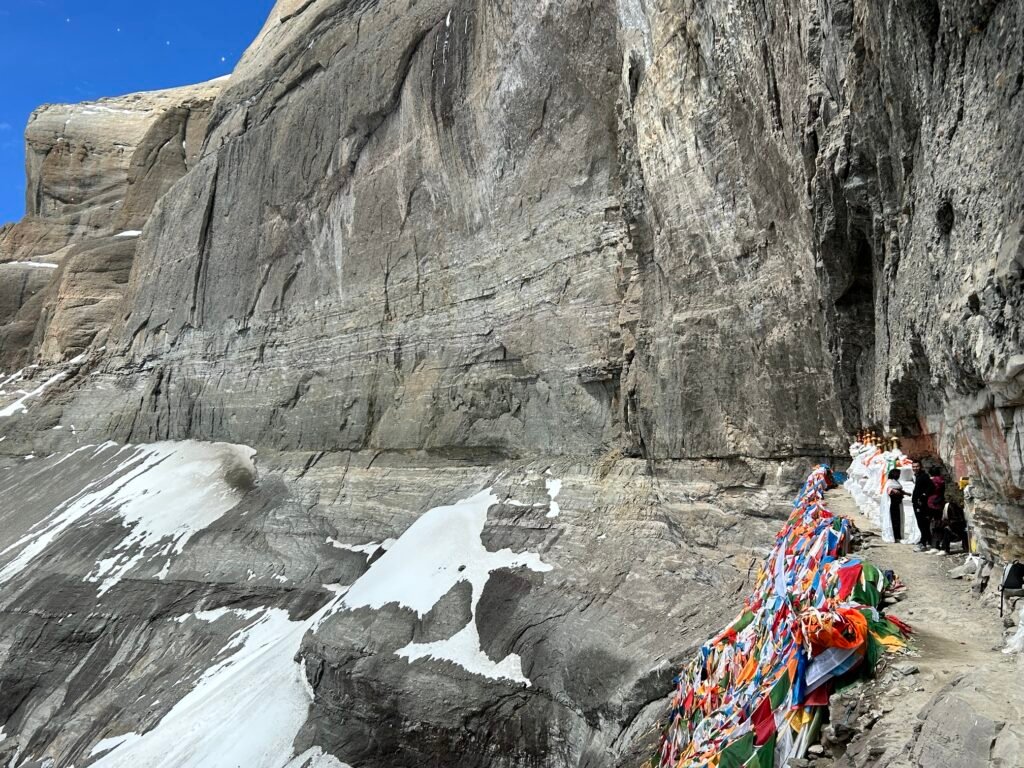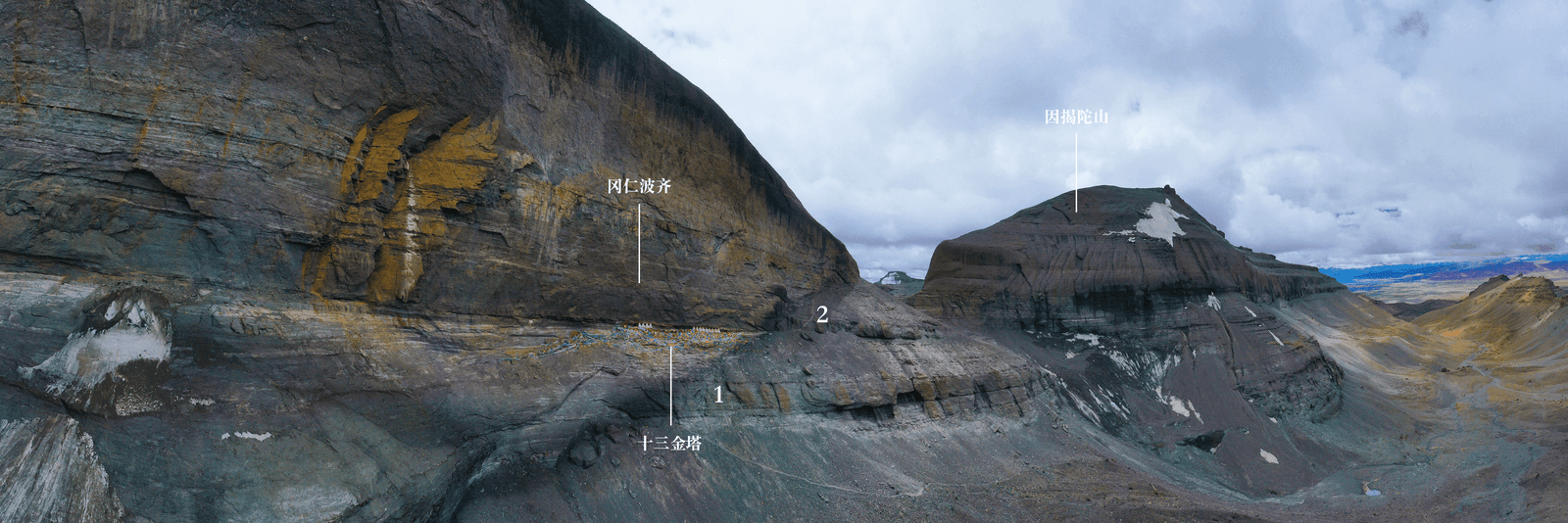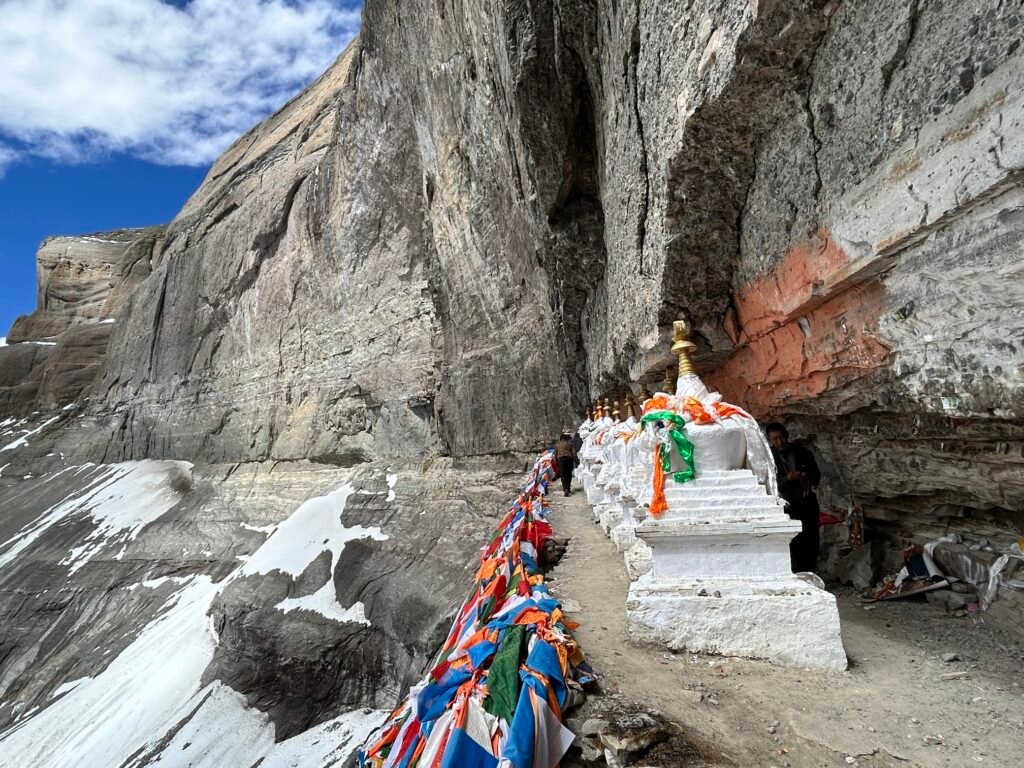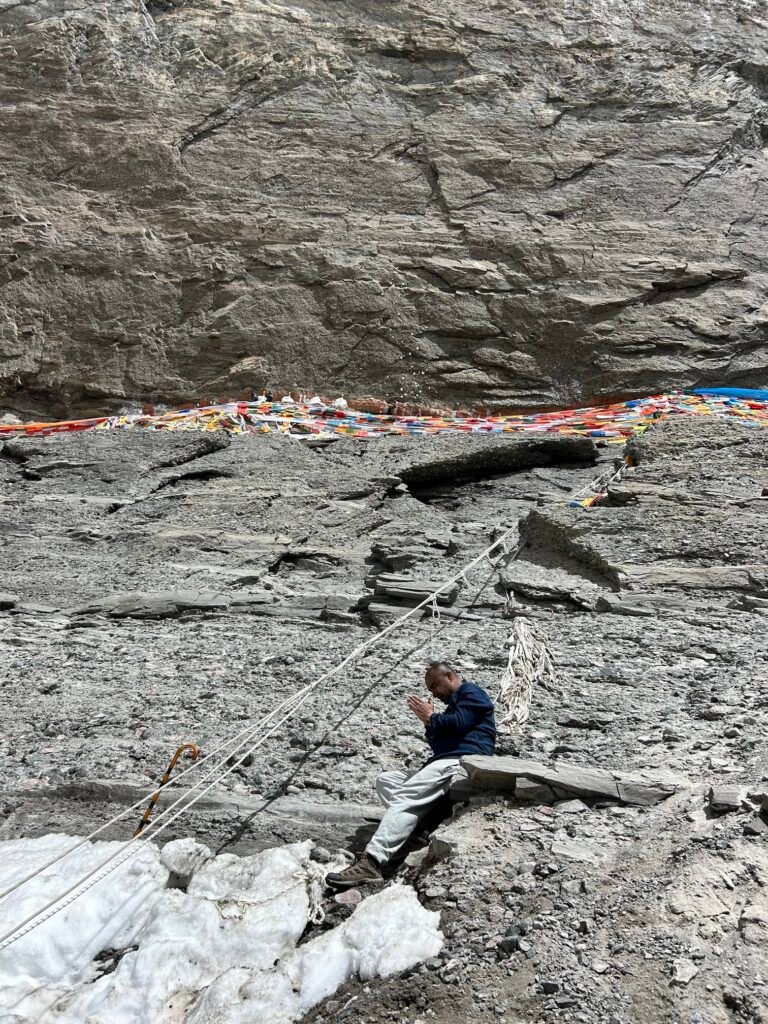The “Thirteen Sacred Stupas” (十三灵塔), often referred to as the “Thirteen Golden Stupas” (十三金塔),་སྐུ་གདུང་མཆོད་རྟེན་བཅུ་གསུམ་༼གསེར་གདུང་བཅུ་གསུམ་ stand as one of the most revered and challenging destinations along the inner kora (circumambulation route) of Mount Kailash. Symbolizing the completion of merit and virtue in Tibetan culture, these stupas hold profound religious significance and embody centuries of spiritual tradition.

Location and Significance
Situated on the southeastern face of Mount Kailash, at an altitude of 5,860 meters, the stupas are positioned over 100 meters above a steep ice gully. Although they are commonly called the “Thirteen Golden Stupas,” this name is a misnomer. In fact, they are simple white stupas, known more accurately as the “Thirteen Sacred Stupas”. The term “golden” is associated with the common tradition of covering stupas of prominent religious figures with gold, but these sacred structures remain unadorned in their modest simplicity.
According to tradition, these stupas enshrine the relics of seventeen high lamas from the Drigung Kagyu lineage. Built within a semi-natural, semi-artificial groove on the rock face of Mount Kailash, they serve as a repository for the remains and sacred objects of these important spiritual leaders, continuing a practice that dates back to the time of Vajradhara Chögyal Trichen Chokyi Drakpa.

Historical and Cultural Legacy
The Thirteen Sacred Stupas near Gyandrak Monastery are also revered as the final resting place for several generations of Drigung Kagyu Rinpoches. Unfortunately, these stupas were destroyed during the Cultural Revolution, although it is unclear whether they were deliberately blown up. Despite this devastation, efforts to rebuild the stupas were undertaken, symbolizing the resilience of the Drigung Kagyu tradition.
Chetsang Rinpoche, a prominent figure in this tradition, once spoke of an encounter with a Swiss couple who had helped with the restoration. The couple showed him photographs of the rebuilt stupas, explaining that they were not only some of the world’s highest monuments but also memorials for the Drigung Kagyu lineage, symbolizing the continuity of spiritual heritage. This narrative is supported by records found in Drigung biographies, affirming the connection of the stupas to the Drigung lineage.

Zhang Zhung Influence
However, a more recent interpretation has emerged online, suggesting that these stupas enshrine the ashes of figures from the ancient Zhang Zhung Kingdom, which predates Tibetan Buddhism in the Ngari region. While this view diverges from the traditional understanding, it nonetheless highlights the lasting impact of Zhang Zhung culture on the spiritual landscape of the area. The ancient Zhang Zhung civilization, known for its influence in western Tibet, continues to leave an indelible mark on the region’s cultural memory, further enriching the historical significance of the site.
Pilgrimage and Spiritual Challenge
The pilgrimage to the Thirteen Sacred Stupas is not only a spiritual endeavor but also a physically demanding journey. Pilgrims must complete the outer kora around Mount Kailash thirteen times before entering the inner kora, which allows access to the sacred stupas. From there, they face the daunting task of free climbing more than 100 meters up a vertical cliff. A rope fashioned from ceremonial khatas (scarves) and thin cords serves as the only aid for those attempting the climb, demanding great physical strength and mental fortitude.
The pilgrimage tests the devotion and endurance of all who undertake it, and rock climbing in this environment is especially strenuous. Pilgrims are advised to minimize the weight they carry and to assess their physical capacity before attempting the climb, as every step poses a significant challenge to both the body and spirit.

Preservation of Sacred Heritage
Given the immense religious and cultural importance of the Thirteen Sacred Stupas, it is crucial to ensure their preservation. Visitors and devotees are urged to approach the site with reverence, engaging in virtuous conduct and respecting the sanctity of the stupas. It is strictly prohibited to tie khatas or prayer flags around the stupas, as well as to climb on them for photography or any other disrespectful purposes. Such actions not only undermine the spiritual value of the site but also risk damaging this precious cultural heritage.
In conclusion, the Thirteen Sacred Stupas at Mount Kailash embody centuries of Tibetan Buddhist tradition, serving as a testament to the enduring spiritual legacy of the Drigung Kagyu lineage. Their connection to both Tibetan and Zhang Zhung history underscores their importance as a cultural monument. We sincerely thank all visitors for their cooperation in protecting and preserving this sacred site.
